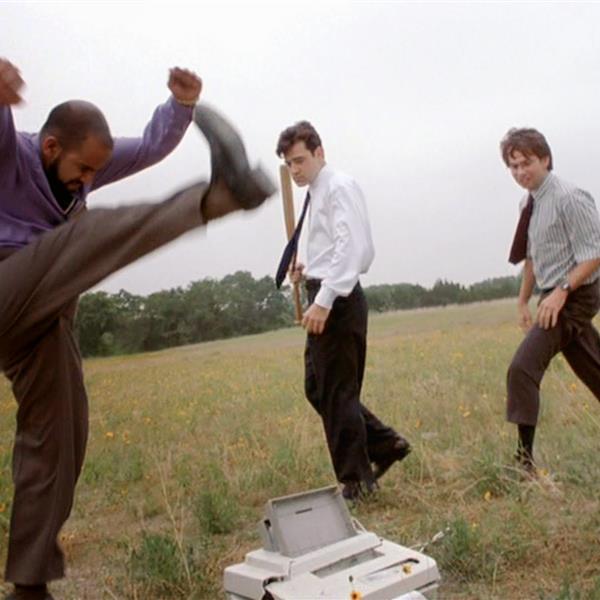A couple weeks ago I naively wrote a blog post about my success in reducing our warehouse lead time to 24 hours. What I thought was a done deal has actually transformed into my entire focus for the last 2 months! I’ve been commuting to our warehouse in NJ from Brooklyn daily for 3 months now and have racked up $700 in tolls this past month alone! It’s been a rough ride but I’ve learned so much so when all is said and done, it’s worth it. I’ll probably have a series of posts on what I learned in the these last few months, but I wanted to start with staffing.
At my last job, our goal was always to outsource fulfillment. We were afraid to have to manage hourly labor when we knew our time would be better spent growing the business in other ways. In my current position outsourcing is simply not an economical option. Our facility is 106,000 square feet, has 40 employees, and we’re actually on pace to open another warehouse similar in size by the end of the year.
In my previously mentioned post I talked about how I was trying to get systems in place to speed up our warehouse. These were all fine and dandy for a few days but they wore off quickly when motivation wasn’t as high. So my focus shifted to the personnel and how to build up a reliable staff. Below I’ve listed the 10 most important things I’ve learned over the last few months in regards to warehouse staffing. So if you’re facing a similar challenge maybe I can spare you some time!
1. Treat employees with respect. This one sounds obvious, but most of the guys we have coming in nowadays are not used to being treated with respect and common courtesy. I regularly hear how nice it is to work here vs. other warehouses. This leads me to believe that most warehouse supervisors and managers (in our area) at least are simply barking orders and not really showing much of a human side. I’m a bit of an idealist, but no workplace should be like that.
2. Don’t assign more than 5 employees to one supervisor. You simply can’t direct more people than that and still be using everyone’s time efficiently. You may think that much management is unnecessary, but in a busy warehouse there is a lot to do at a fast pace, so someone needs to be directing the chaos to ensure things run smoothly for the span of a workday.
3. Use staffing agencies to source good workers. When I first came in I had to let 15 people go within the first 2 weeks. You simply can’t spend the time trying to interview for 15 labor positions. The solution for this is hiring a staffing agency. The company I use is Randstad and I’ve been very pleased. This is of course much more expensive than just hiring your own people directly, but in a high speed labor intensive environment you need to see how they do in the field. It’s totally normal for people to leave within an hour once they realize how much physical labor is involved, so you need to vet your guys for not just attitude but also physical abilities. The added benefit is that if someone isn’t working out you can simply shoot the staffing company an email at the end of the day that that person is no longer needed and they handle it. I know this sounds cold but typically we can weed out the people that won’t fit in within the first few days so at that point we don’t owe them more than that. Once they complete a certain amount of hours, typically around 500-600, you can hire them on full time without paying any fees. So in the long term you’re better off hiring long term guys that you know work hard and fit the culture.
4. Communicate all rules and procedures clearly and regularly. When I first arrived there were no defined rules in our warehouse. This made it hard to hold anyone accountable for anything. Sure we immediately removed the people that did obviously unacceptable stuff, but in most cases the person had never been told otherwise. So I set up a list of rules which I posted around the warehouse and also review in a weekly meeting, and shockingly, they are mostly being followed! It’s not that there was a a culture of rebellion in the warehouse, it’s simply that there were no guidelines for people to operate under.
5. Invite feedback on procedures and workflows. A lot of the guys in my warehouse have been working in many different warehouses for many years. They have excellent feedback on ways to improve things, and considering they are the ones performing the tasks day in and out, they would probably have a different perspective than you! Make sure you don’t dismiss their ideas.
6. Spend more time at your warehouse. It took me months of being there every day to learn about certain secrets and errors and shady dealings. This is stuff you simply won’t catch in a weekly visit. If you want to ensure there is nothing shady going on you need to be heavily involved with the warehouse, or at least have someone who you can seriously, seriously trust there for you. Although it may be the less glamorous side of e-commerce, you need to know what’s going on with your building full of expensive product surrounded by people you don’t know well!
7. Be weary of employees that are always asking for overtime. Your goal should be to never need to have people work overtime. It’s so much cheaper to just hire more employees to cover this extra work. With this in mind, be weary of those that require overtime to meet their income requirements. They will find reasons to stay longer. I’m currently trying to scale back overtime which has been the norm for years, and people simply work slower. I’m putting a whole new pay for performance system in place which will be a topic of a future post, but at this point I only hire people that DON”T want to work overtime and weekends. At first I thought that would be difficult to find, but it’s been easier than I thought!
8. Don’t be the lowest bidder. The difference between a person that will work for $8.50 an hour and $10 an hour is ENORMOUS. Trust me, you can’t afford to be the lowest bidder. You’re basically filtering out anyone that works hard enough to have a choice in employment and only getting the least desirable candidates in your area.
9. Keep watch for sadistic supervisors. There are power trips galore in a warehouse. If you’re on the top of the pyramid though you’ll never know who the sadistic ones are. I personally had an evil boss at my job in college so I feel very strongly about this. I tell all of my supervisors that I judge them by their subordinates feedback and level of respect. Don’t be the careless boss that let’s others needlessly suffer. This stuff happens out there if left unchecked as the famous Stanford Prison Experiment demonstrated.
10. Make yourself accessible to all employees. Ultimately the only way to learn whats really going on and what needs to change is to make all employees feel like they can approach you with any concerns. At every meeting I hold I always end with the request for anyone to stop by my office who would like to talk. At first this was overwhelming and it was burning a lot of my time up, but the relationships I’ve forged as a result have resulted in tons of important information that no one in management in the history of the company ever knew about. It’s risky because it will take up valuable time, but if your role is to ensure your warehouse runs smoothly then this is important enough to dedicate the time to it.
Ultimately my warehouse is still a massive work in progress, but every day I can see the improvements. If you have experience and tips in regards to staffing, share them in the comments!




